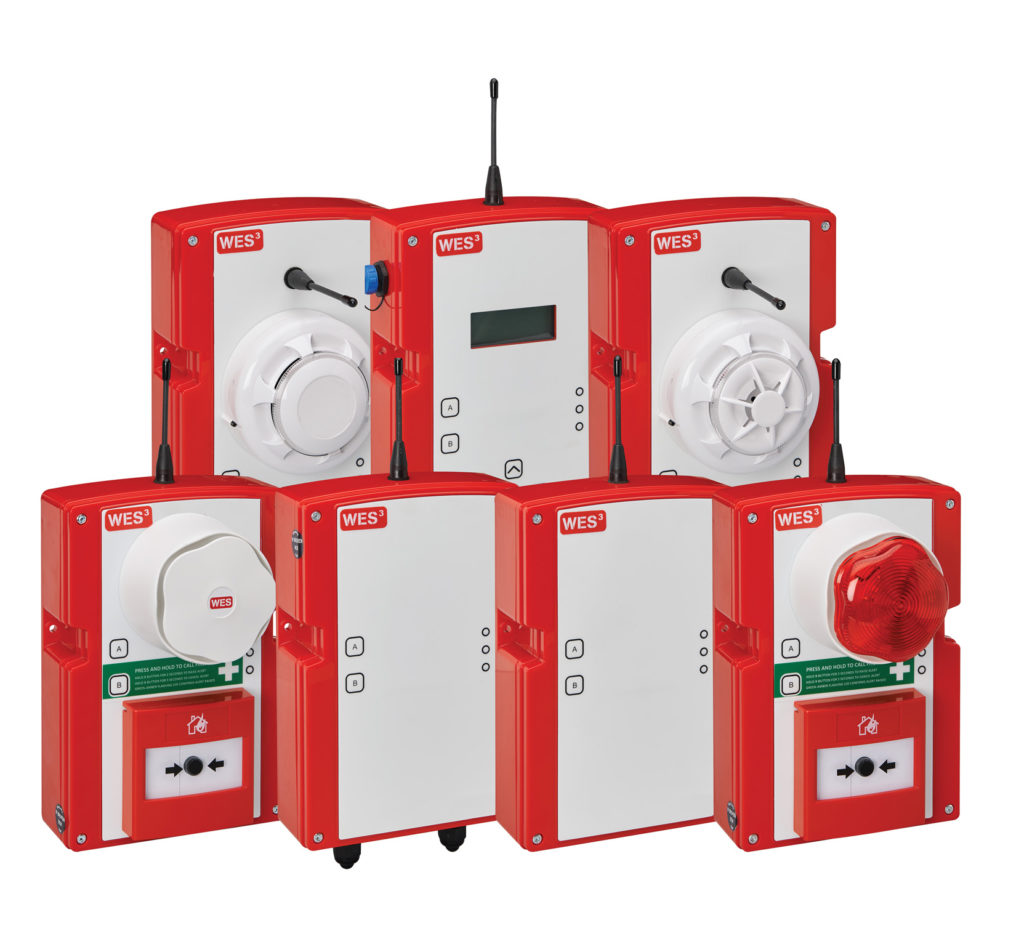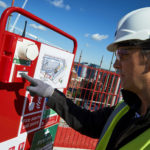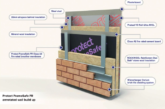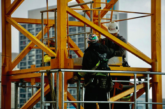In these challenging times, Andy Hicks, Managing Director at Ramtech Electronics, looks at why now is not the time to neglect fire safety on construction sites and temporary coronavirus facilities.
The Coronavirus is one of the biggest challenges to face humanity for over 100 years. It is non-political, non-discriminatory and its impact on global health and on the state of our economy is unfathomable at this stage. Many people in the UK hoped it would stay in ‘other countries’ becoming the infection that we managed to escape….but, if we were being honest, we knew, with the impact of international travel, this would never be the case.
It first hit our industry with the cancellation of major trade exhibitions such as Homebuilding and Renovating. Large organisations then started to cancel meetings of more than a handful of people and everything was transferred to video conferencing.
Despite this, the UK construction industry has demonstrated its importance as an industry in recent weeks. Whether its building temporary hospital wards, changing the use of existing buildings to food storage warehouses or installing life-saving oxygen equipment, the construction sector is certainly delivered for our nation during this difficult time.
Our own efforts have involved the installation of wireless fire alarm systems into the staff changing portacabins outside the new Nightingale Hospital at London ExCeL. The temporary field hospital, which was constructed in under a week, will treat up to 4,000 struck down by Covid-19. The WES3 wireless alarm system, which is linked to a control panel in the security hut on site, uses best quality Category 1, Euro-harmonised radio, meaning it will not interfere with other technologies used at ExCeL. Any activations are communicated to the ExCel security suite via G4S by radio.
Few could have predicted that we would have arrived at this situation. The implications, not only for the economy, are far reaching. For instance, construction sites in built-up areas will now find they are surrounded by a greater density of people living and working in adjacent buildings as they self-isolate at home. The ability of fire to spread quickly from an unattended site means these people may be at greater risk unless adequate mitigation steps are taken.
Fire risk on construction sites
It’s one of the reasons why fire risk on construction sites needs to be a key focus during the lockdown period and several industry leaders have already identified this. Chief Executive of the Construction Industry Council, Graham Watts, published a list of construction work that he believes is essential for public safety. His blog lists several key focus areas including [6] Fire safety inspections, [7] Requirement for maintenance of fire protection systems and equipment to meet Fire Safety legislation — even if buildings are not occupied. [8] Ongoing need for Fire risk assessments, both to meet legislation and new circumstances in buildings, [9] Remedial work required to remove unsafe ACM cladding etc. [16] Emergency Leaking/flooding.
Watts goes on to identify the conundrum facing us all; it would be “incredibly dangerous for all construction sites to close; but it is also incredibly dangerous for all construction sites to remain open.”
Even though construction sites may place workers on temporary leave (furlough), electrical faults can still develop and cause fires to rage undetected and potentially spread to adjoining occupied buildings. All this at a time when fire crews are being deployed to help the coronavirus response, such as supporting ambulance teams. Criminal activity, too, on furloughed sites can result in fires, either by a discarded cigarette, arson or, again, tampering with electrical circuits, which isn’t helped by the presence of flammable materials found on all sites.
Critical construction work
Set against this background is the need for some construction work to continue and a good example of this is the replacement of unsafe Aluminium Composite Material (ACM) cladding panels on high-rise buildings, which remain “critical to public safety”. These projects can continue during the coronavirus outbreak, according to government guidance, highlighting the need, with fire and rescue services deployed elsewhere, for scrupulous regard to fire safety on these projects.
There is ‘wriggle’ room in other areas, too, on what the Government calls critical projects such as ‘datacentres and pharmaceutical factories under construction and the like’, which can continue to work.
Away from the construction industry, changing the use of buildings to support the crisis effort can require the need for a quick and effective way of deploying a fire alarm system in order to protect critical workers. This includes the creation of temporary hospitals or food distribution warehouses, where completing the work in the shortest possible time — including fully working fire alarm systems — is essential.
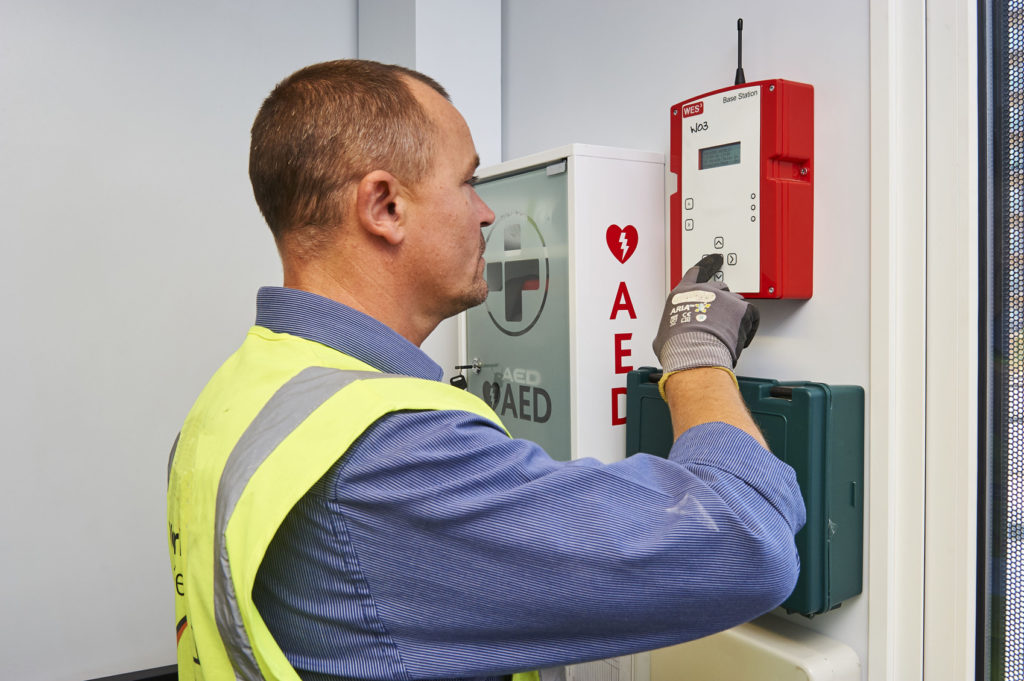 Protecting sites with wireless technology
Protecting sites with wireless technology
In these unprecedented times, fire safety is essential. Not only are the systems required to comply with statutory safety legislation, but their implementation is critical in protecting workers and those living nearby. Protecting your clients’ assets is vital too, and after this crisis has passed, they and their insurers will expect that adequate measures were taken.
When it comes to fire alarm systems there are two choices: wired or wireless, although the latter is gaining favour because it doesn’t require specialist trades to set up, with call points deployed in minutes. Any number of call points can be added to the system and linked wirelessly to cover large and small sites.
Wireless fire alarm systems, which are available to rent or buy, should be compliant with EN54. Incorporating dust resistant smoke and heat detectors to reduce false alarms, they can be linked to offsite monitors, so are highly suited to locked down sites and operating 24/7.
Advances in technology also mean that wireless systems are capable of being much more than a fire alarm. Incorporating wireless technology with cloud-based data capture goes a step further by enabling construction sites to implement a fully integrated fire, flood, security and medical response system — essential if, for instance, a locked-down site has basic security team coverage. This is supported by cloud storage and apps that can interpret and respond to the data received, converting it into valuable management information that can be instantaneously sent to anyone with a smart phone. These end-to-end solutions enable site management teams to capture data in real-time regarding emergencies and send customised alerts out to relevant personnel.
Practical benefits of these wireless technologies include an ability to alert emergency response teams when a fire is detected, or interfacing to security systems so that when intruder is detected opening a security door an alarm is raised — especially important when construction sites are vacated during the shutdown. These systems can also detect flooding caused by a burst pipe (which can impact on electrical circuits). Security patrols or lone workers complying with self-isolation requirements can raise a medical alert via call points from remote areas of the building or construction site, or alternatively, a ‘welfare check in’ functionality can be set that requires personnel to send a signal every 10 minutes verifying that they are ok.
Being able to deploy a wireless fire alarm system in minutes means that they provide a practical and easy to implement solution for change of use buildings looking for a way of protecting critical workers in the food, pharmaceutical and logistics sector.
The way forward
Construction sites have suddenly become more dangerous as they undergo temporary closure. Buildings that are re-purposed to help support the coronavirus effort are also looking for effective fire alarm systems. Fire, flood and criminal activity is an ever-present danger in all these situations. The risks from fire and its ability to spread rapidly are exacerbated by self-isolation, meaning a greater density of people living adjacent to construction sites. As a result, more developers are taking steps to deploy wireless technology that protects their assets
Setting a benchmark on construction sites and demonstrating that you take the safety of those living and working nearby, or critical workers within the facility, as well as your clients’ assets, is easier that you think due to advances in wireless fire alarm systems.
For more information on Ramtech Electronics’ WES Wireless Fire Safety & Security Technology, click here or call 00 44 (0) 115 957 8282.
